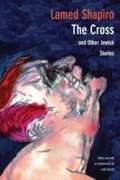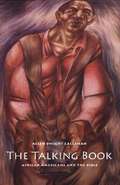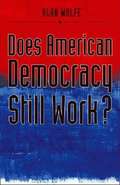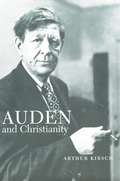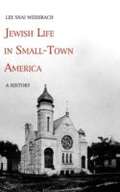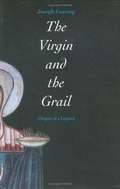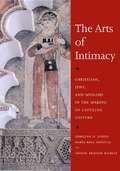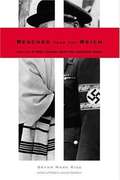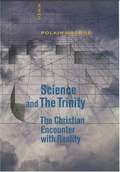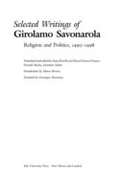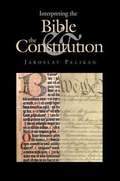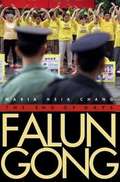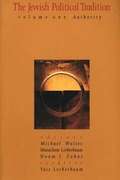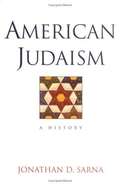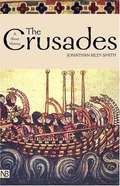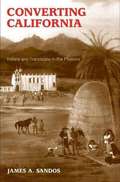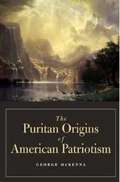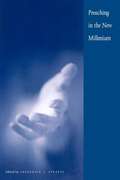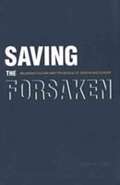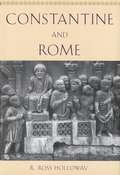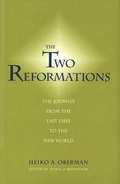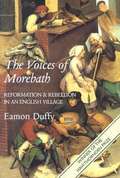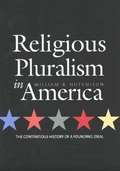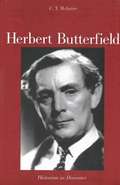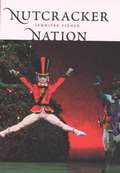- Table View
- List View
The Cross and Other Jewish Stories
by Lamed Shapiro Leah GarrettLamed Shapiro (1878-1948) was the author of groundbreaking and controversial short stories, novellas, and essays. Himself a tragic figure, Shapiro led a life marked by frequent ocean crossings, alcoholism, and failed ventures, yet his writings are models of precision, psychological insight, and daring. Shapiro focuses intently on the nature of violence: the mob violence of pogroms committed against Jews; the traumatic aftereffects of rape, murder, and powerlessness; the murderous event that transforms the innocent child into witness and the rabbi's son into agitator. Within a society on the move, Shapiro's refugees from the shtetl and the traditional way of life are in desperate search of food, shelter, love, and things of beauty. Remarkably, and against all odds, they sometimes find what they are looking for. More often than not, the climax of their lives is an experience of ineffable terror. This collection also reveals Lamed Shapiro as anAmericanmaster. His writings depict the Old World struggling with the New, extremes of human behavior combined with the pursuit of normal happiness. Through the perceptions of a remarkable gallery of men, women, children--of even animals and plants--Shapiro successfully reclaimed the lost world of the shtetl as he negotiated East Broadway and the Bronx, Union Square, and vaudeville. Both in his life and in his unforgettable writings, Lamed Shapiro personifies the struggle of a modern Jewish artist in search of an always elusive home.
The Talking Book: African Americans and the Bible
by Allen Dwight CallahanThe Talking Book casts the Bible as the central character in a vivid portrait of black America, tracing the origins of African-American culture from slavery's secluded forest prayer meetings to the bright lights and bold style of today's hip-hop artists. The Bible has profoundly influenced African Americans throughout history. From a variety of perspectives this wide-ranging book is the first to explore the Bible's role in the triumph of the black experience. Using the Bible as a foundation, African Americans shared religious beliefs, created their own music, and shaped the ultimate key to their freedom--literacy. Allen Callahan highlights the intersection of biblical images with African-American music, politics, religion, art, and literature. The author tells a moving story of a biblically informed African-American culture, identifying four major biblical images--Exile, Exodus, Ethiopia, and Emmanuel. He brings these themes to life in a unique African-American history that grows from the harsh experience of slavery into a rich culture that endures as one of the most important forces of twenty-first-century America.
Does American Democracy Still Work?
by Alan WolfeThe past few decades have brought a shift in the nature of American democracy--an alarming shift that threatens such liberal democratic values as respect for pluralism, acceptance of the separation of powers, and recognition of the rights of opposition parties. In this insightful book, political scientist Alan Wolfe identifies the current political conditions that endanger the quality of our democracy. He describes how politics has changed, and he calls for a democracy protection movement designed to preserve our political traditions not unlike the environmental protection movement's efforts to safeguard the natural world. Voters who know little about issues, leaders who bend rules with little fear of reprisal, and political parties that are losing the ability to mobilize citizens have all contributed to a worrisome new politics of democracy, Wolfe argues. He offers a brilliant analysis of how religion and morality have replaced political and economic self-interest as guiding principles, and how a dangerous populism promotes a radical form of elitism. Without laying blame on one party or ideology and without claiming that matters will improve with one party or the other in office, Wolfe instead suggests that Americans need to understand the danger their own indifference poses and take political matters more seriously.
Auden and Christianity
by Arthur KirschOne of the twentieth century's most important poets, W. H. Auden stands as an eloquent example of an individual within whom thought and faith not only coexist but indeed nourish each other. This book is the first to explore in detail how Auden's religious faith helped him to come to terms with himself as an artist and as a man, despite his early disinterest in religion and his homosexuality. Auden and Christianity shows also how Auden's Anglican faith informs, and is often the explicit subject of, his poetry and prose. Arthur Kirsch, a leading Auden scholar, discusses the poet's boyhood religious experience and the works he wrote before emigrating to the United States as well as his formal return to the Anglican Communion at the beginning of World War II. Kirsch then focuses on Auden's criticism and on neglected and underestimated works of the poet's later years. Through insightful readings of Auden's writings and biography, Kirsch documents that Auden's faith and his religious doubt were the matrix of his work and life.
Jewish Life in Small-Town America: A History
by Lee Shai WeissbachLee Shai Weissbach offers the first comprehensive portrait of small-town Jewish life in America. Exploring the history of communities of 100 to 1000 Jews, the book focuses on the years from the mid-nineteenth century to World War II. Weissbach examines the dynamics of 490 communities across the United States and reveals that smaller Jewish centers were not simply miniature versions of larger communities but were instead alternative kinds of communities in many respects. The book investigates topics ranging from migration patterns to occupational choices, from Jewish education and marriage strategies to congregational organization. The story of smaller Jewish communities attests to the richness and complexity of American Jewish history and also serves to remind us of the diversity of small-town society in times past.
The Virgin and the Grail: Origins of a Legend
by Joseph Ward GoeringSome fifty years before Chrétien de Troyes wrote what is probably the first and certainly the most influential story of the Holy Grail, images of the Virgin Mary with a simple but radiant bowl (called a "grail" in local dialect) appeared in churches in the Spanish Pyrenees. In this fascinating book, Joseph Goering explores the links between these sacred images and the origins of one of the West's most enduring legends. While tracing the early history of the grail, Goering looks back to the Pyrenean religious paintings and argues that they were the original inspiration of the grail legend. He explains how storytellers in northern France could have learned of these paintings and how the enigmatic "grail" in the hands of the Virgin came to form the centerpiece of a story about a knight in King Arthur's court. Part of the allure of the grail, Goering argues, was that neither Chrétien nor his audience knew exactly what it represented or why it was so important. And out of the attempts to answer those questions the literature of the Holy Grail was born.
The Arts of Intimacy: Christians, Jews, and Muslims in the Making of Castilian Culture
by Maria Rosa Menocal Jerrilynn D. Dodds Abigail Krasner BalbaleNamed a Book of the Year by the Times Literary Supplement, this lavishly illustrated work explores the vibrant interaction among different and sometimes opposing cultures, and how their contacts with one another transformed them all. It chronicles the tumultuous history of Castile in the wake of the Christian capture of the Islamic city of Tulaytula, now Toledo, in the eleventh century and traces the development of Castilian culture as it was forged in the new intimacy of Christians with the Muslims and Jews they had overcome. The authors paint a portrait of the culture through its arts, architecture, poetry and prose, uniquely combining literary and visual arts. Concentrating on the eleventh and twelfth centuries, the book reveals the extent to which Castilian identity is deeply rooted in the experience of confrontation, interaction, and at times union with Hebrew and Arabic cultures during the first centuries of its creation. Abundantly illustrated, the volume serves as a splendid souvenir of southern Spain; beautifully written, it illuminates a culture deeply enriched by others.
Rescued from the Reich: How One of Hitler's Soldiers Saved the Lubavitcher Rebbe
by Bryan RiggWhen Hitler invaded Warsaw in the fall of 1939, hundreds of thousands of civilians--many of them Jewish--were trapped in the besieged city. The Rebbe Joseph Schneersohn, the leader of the ultra-orthodox Lubavitcher Jews, was among them. Followers throughout the world were filled with anguish, unable to confirm whether he was alive or dead. Working with officials in the United States government, a group of American Jews initiated what would ultimately become one of the strangest--and most miraculous--rescues of World War II. The escape of Rebbe Schneersohn from Warsaw has been the subject of speculation for decades. Historian Bryan Mark Rigg has now uncovered the true story of the rescue, which was propelled by a secret collaboration between American officials and leaders of German military intelligence. Amid the fog of war, a small group of dedicated German soldiers located the Rebbe and protected him from suspicious Nazis as they fled the city together. During the course of the mission, the Rebbe learned the shocking truth about the leader of the rescue operation, the decorated Wehrmacht soldier Ernst Bloch: he was himself half-Jewish, and a victim of the rising tide of German antisemitism. A harrowing story about identity and moral responsibility, Rescued from the Reich is also a riveting narrative history of one of the most extraordinary rescue missions of World War II.
Science and the Trinity: The Christian Encounter with Reality
by John C. PolkinghorneMost often, the dialogue between religion and science is initiated by the discoveries of modern science--big bang cosmology, evolution, or quantum theory, for example. In this book, scientist-theologian John Polkinghorne changes the discussion. He approaches the dialogue from a little-explored perspective in which theology shapes the argument and sets the agenda of questions to be considered. The author begins with a review of approaches to science and religion in which the classification focuses on theological content rather than on methodological technique. He then proceeds with chapters discussing the role of Scripture, a theology of nature, the doctrine of God, sacramental theology, and eschatology. Throughout, Polkinghorne takes the perspective of Trinitarian thinking while arguing in a style that reflects the influence of his career as a theoretical physicist. In the final chapter, the author defends the appropriateness of addressing issues of science and religion from the specific standpoint of his Christian belief. His book provides an important model for theologians and scientists alike, showing how their two fields can inform one another in significant ways.
Selected Writings of Girolamo Savonarola: Religion and Politics, 1490-1498
by Girolamo Savonarola Anne Borelli Maria Pastore PassaroFive hundred years after his death at the stake, Girolamo Savonarola remains one of the most fascinating figures of the Italian Renaissance. This wide-ranging collection, with an introduction by historian Alison Brown, includes translations of his sermons and treatises on pastoral ministry, prophecy, politics, and moral reform, as well as the correspondence with Alexander VI that led to Savonarola's silencing and excommunication. Also included are first-hand accounts of religio-civic festivities instigated by Savonarola and of his last moments. This collection demonstrates the remarkable extent of Savonarola's contributions to the religious, political, and aesthetic debates of the late fifteenth century.
Interpreting the Bible and the Constitution
by Jaroslav PelikanBoth the Bible and the Constitution have the status of "Great Code," but each of these important texts is controversial as well as enigmatic. They are asked to speak to situations that their authors could not have anticipated on their own. In this book, one of our greatest religious historians brings his knowledge of the history of biblical interpretation to bear on the question of constitutional interpretation. Jaroslav Pelikan compares the methods by which the official interpreters of the Bible and the Constitution - the Christian Church and the Supreme Court, respectively - have approached the necessity of interpreting, and reinterpreting, their important texts. In spite of obvious differences, both texts require close, word-by-word exegesis, an awareness of opinions that have gone before, and a willingness to ask new questions of old codes, Pelikan observes. He probes for answers to the question of what makes something authentically "constitutional" or "biblical," and he demonstrates how an understanding of either biblical interpretation or constitutional interpretation can illuminate the other in important ways. --BOOK JACKET. Title Summary field provided by Blackwell North America, Inc. All Rights Reserved
Falun Gong: The End of Days
by Maria Hsia ChangThe first full account in English of the ongoing conflict between the Chinese government and the Falun Gong, a religious movement that claims millions of followers. The world first took notice of a religious group called Falun Gong on April 25, 1999, when more than 10,000 of its followers protested before the Chinese Communist headquarters in Beijing. Falun Gong investigates events in the wake of the demonstration: Beijing's condemnation of the group as a Western, anti-Chinese force and doomsday cult, the sect's continued defiance, and the nationwide campaign that resulted in the incarceration and torture of many Falun Gong faithful. Maria Hsia Chang discusses the Falun Gong's beliefs, including their ideas on cosmology, humanity's origin, karma, reincarnation, UFOs, and the coming apocalypse. She balances an account of the Chinese government's case against the sect with an evaluation of the credibility of those accusations. Describing China's long history of secret societies that initiated powerful uprisings and sometimes overthrew dynasties, she explains the Chinese government's brutal treatment of the sect. And she concludes with a chronicle of the ongoing persecution of religious groups in China--of which Falun Gong is only one of many--and the social conditions that breed the popular discontent and alienation that spawn religious millenarianism.
The Jewish Political Tradition, Volume 1: Authority
by Michael Walzer Yair Lorberbaum Menachem Lorberbaum Noam Zohar Noam J. ZoharThis book launches a landmark four-volume collaborative work exploring the political thought of the Jewish people from biblical times to the present. The texts and commentaries in Volume I address the basic question of who ought to rule the community. The contributors--eminent philosophers, lawyers, political theorists, and other scholars working in different fields of Jewish studies--discuss the authority of God, the claims of kings, priests, prophets, rabbis, lay leaders, and gentile rulers during the years of the exile, and issues of authority in the modern state of Israel.
American Judaism: A History
by Jonathan D. SarnaSarna, a preeminent scholar of American Judaism (he's affiliated with Brandeis University), chronicles events, personalities, and attitudes pertaining to Jews, as well as attitudes held by Jews themselves, in the United States over a period of 350 years. He weaves the history of a people present in the United States since early colonial daysmarginalized in many ways and always worried about survivalinto the context of America's political, social, and religious life. Relevant to non-Jewish as well as Jewish communities, the themes of evolving cultural and personal identities, assimilation, and revitalization are core in both American history and contemporary American life. This thoughtful and engaging work will attract a wide scholarly and lay audience. Annotation ©2004 Book News, Inc. , Portland, OR (booknews. com)
The Crusades: A History (2nd edition)
by Jonathan Riley-SmithThis lively, comprehensive history provides a wealth of fascinating detail about the Crusades and the politics and personalities behind them. This new edition includes revisions throughout as well as a new Preface and Afterword in which Jonathan Riley-Smith surveys recent developments in the field and examines responses to the Crusades in different periods, from the Romantics to the Islamic world today, making this the standard and authoritative account of the Crusades for years to come. From reviews of the first edition:"Everything is here: the crusades to the Holy Land, and against the Albigensians, the Moors, the pagans in Eastern Europe, the Turks, and the enemies of the popes. Riley-Smith writes a beautiful, lucid prose, . . . [and his book] is packed with facts and action. "--Choice "A concise, clearly written synthesis . . . by one of the leading historians of the crusading movement. "--Robert S. Gottfried,Historian "A lively and flowing narrative [with] an enormous cast of characters that is not a mere catalog but a history. . . . A remarkable achievement. "--Thomas E. Morrissey,Church History "Superb. "--Reuven S. Avi-Yonah,Speculum "A first-rate one-volume survey of the Crusading movement from 1074 . . . to 1798. "--Southwest Catholic
Converting California: Indians and Franciscans in the Missions
by James SandosThis book is a compelling and balanced history of the California missions and their impact on the Indians they tried to convert.
The Puritan Origins of American Patriotism
by George MckennaIn this absorbing book, George McKenna ranges across the entire panorama of American history to track the development of American patriotism. That patriotism--shaped by Reformation Protestantism and imbued with the American Puritan belief in a providential "errand"--has evolved over 350 years and influenced American political culture in both positive and negative ways, McKenna shows. The germ of the patriotism, an activist theology that stressed collective rather than individual salvation, began in the late 1630s in New England and traveled across the continent, eventually becoming a national phenomenon. Today, American patriotism still reflects its origins in the seventeenth century. By encouraging cohesion in a nation of diverse peoples and inspiring social reform, American patriotism has sometimes been a force for good. But the book also uncovers a darker side of the nation's patriotism--a prejudice against the South in the nineteenth century, for example, and a tendency toward nativism and anti-Catholicism. Ironically, a great reversal has occurred, and today the most fervent believers in the Puritan narrative are the former "outsiders"--Catholics and Southerners. McKenna offers an interesting new perspective on patriotism's role throughout American history, and he concludes with trenchant thoughts on its role in the post-9/11 era.
Preaching in the New Millennium: Celebrating the Tercentennial of Yale University
by Frederick J. StreetsIn this collection of sermons, fifteen distinguished religious leaders reflect upon the moral, social, and political nature of our time. The sermons originated during the Tercentennial celebrations at Yale University, and they provide a vivid snapshot of the rich religious history of Yale and its contribution to the character of our nation. Some of America's most prominent religious figures are here, among them William Willimon, William Sloane Coffin, Peter Gomes, Gardner Taylor, and Barbara Brown Taylor. Their sermons offer valuable religious and intellectual insights into our national consciousness both before and after the tragedies of September 11, 2001. In a lively introduction to the volume, Rev. Frederick J. Streets sets the collection in context and contemplates the past and present nature of religious life at Yale.
Saving the Forsaken: Religious Culture and the Rescue of Jews in Nazi Europe
by Pearl M. OlinerPearl M. Oliner examines data on Christian rescuers and nonrescuers of Jews during the Holocaust to shed light on these important questions. Drawing on interviews with more than five hundred Christians--Protestant and Catholic, very religious, irreligious, and moderately religious--rescuers and nonrescuers living in Nazi-occupied Europe, Oliner offers a sociological perspective on the values and attitudes that distinguished each group. She presents several case studies of rescuers and nonrescuers within each group and then interprets the individual's behavior as it relates to his or her group. She finds that the value patterns of the religious groups differ significantly from one another, and she is able to highlight those factors that appear to have contributed most toward rescue within each group.
Constantine and Rome
by R. Ross Holloway"Constantine the Great (285-337) played a crucial role in mediating between the pagan, imperial past of the city of Rome, which he conquered in 312, and its future as a Christian capital. In this book, R. Ross Holloway draws on archaeological evidence to examine Constantine's remarkable building program in Rome, describing a cityscape that was at once Christian and pagan, mirroring the personality of its ruler. " "Holloway begins by examining the Christian Church in the period before the Peace of 313, when Constantine and his coemperor Licinius ended persecution of the Christians. He then focuses on the structure, style, and significance of important monuments. He discusses the Arch of Constantine, suggesting that it was begun by Constantine's predecessor Maxentius but finished, with modifications, for the new emperor. He looks at the basilicas of the Constantinian period, including St. John's in the Lateran and St. Peter's, and the imperial mausoleum and basilica at Tor Pignatara on the Via Labicana, which he contends is one of the most innovative complexes in the history of Western architecture. Holloway next surveys the Christian cemeteries of the period and reviews evidence for adaptation of pagan buildings to Christian worship. In a final chapter Holloway advances a new interpretation of the archaeology of the Tomb of St. Peter under the high altar of St. Peter's basilica. The tomb, he concludes, was not the original resting place of the remains venerated as those of the apostle but was created only in 251 by Pope Cornelius. "--BOOK JACKET. Title Summary field provided by Blackwell North America, Inc. All Rights Reserved
The Two Reformations: The Journey from the Last Days to the New World
by Heiko A. Oberman Donald WeinsteinIn this last collection of his vital, controversial, and accessible writings, Oberman seeks to liberate and broaden our understanding of the European Reformation, from its origins in medieval philosophy and theology through the Puritan settlers who brought Calvin's vision to the New World. Ranging over many topics, he finds fascinating connections between aspects of the Reformation and twentieth-century history and thought--most notably the connection to Nazism and the Holocaust.
The Voices of Morebath: Reformation and Rebellion in an English Village
by Eamon DuffyThis is a book about a sixteenth-century country priest, and the extraordinary records he kept. It deals with ordinary people in an unimportant place, whose claim to fame is that they lived through the most decisive revolution in English history, and had a priest who wrote everything down.
Religious Pluralism in America: The Contentious History of a Founding Ideal
by William R. HutchisonIn this reappraisal of American religious history, William Hutchison chronicles the country's struggle to fulfill the promise of its founding ideals. In 1800 the United States was an overwhelmingly Protestant nation. Over the next two centuries, Catholics, Mormons, Jews, Muslims, Hindus, and others emerged to challenge the Protestant mainstream. Although their demands were often met with resistance, Hutchison demonstrates that as a result of these conflicts we have expanded our understanding of what it means to be a religiously diverse country. No longer satisfied with mere legal toleration, we now expect that all religious groups will share in creating our national agenda. This book offers a groundbreaking and timely history of our efforts to become one nation under multiple gods. --BOOK JACKET. Title Summary field provided by Blackwell North America, Inc. All Rights Reserved
Herbert Butterfield: Historian as Dissenter
by C. T. McintireHerbert Butterfield (1900-1979) was an important British historian and religious thinker whose ideas, in particular his concept of a "Whig interpretation of history," remain deeply influential. In this intellectual biography--the first comprehensive study of Butterfield--C. T. McIntire focuses on the creative processes that lay behind Butterfield's intellectual accomplishments. Drawing on his investigations into Butterfield's vast and diverse output of published and unpublished work, McIntire explores Butterfield's ideas and methods. He describes Butterfield's lifelong devotion to his Methodist faith and shows how his Christian spirituality animated his historical work. He also traces the theme of dissent that ran through Butterfield's life and work, presenting a man who found himself at odds with prevailing convictions about history, morality, politics, religion, and teaching, a man who elevated the notion of dissent into an ethic of living in tension with any established system. "This important and,original work is an intellectual biography that focuses on the life and achievements of a major historian in mid-twentieth-century England." --Martin E. Marty, University of Chicago
Nutcracker Nation: How an Old World Ballet Became a Christmas Tradition in the New World
by Jennifer FisherThe Nutcracker is the most popular ballet in the world, adopted and adapted by hundreds by hundreds of communities across the United States and Canada every Christmas season. In this entertainingly informative book, Jennifer Fisher offers new insights into the Nutcracker phenomenon, examining it as a dance scholar and critic, a former participant, an observer of popular culture, and an interviewer of those who dance, present, and watch the beloved ballet. Fisher traces The Nutcracker's history from its St. Petersburg premiere in 1892 through its emigration to North America in the mid-twentieth century to the many productions of recent years. She notes that after it was choreographed by another Russian immigrant to the New World, George Balanchine, the ballet began to thrive and variegate: Hawaiians added hula, Canadians added hockey, Mark Morris set it in the swinging sixties, and Donald Byrd placed it in Harlem. The dance world underestimates The Nutcracker at its peril, Fisher suggests, because the ballet,is one of its most powerfully resonant traditions. After starting life as a Russian ballet based on a German tale about a little girl's imagination, The Nutcracker has become a way for Americans to tell a story about their communal values and themselves.
